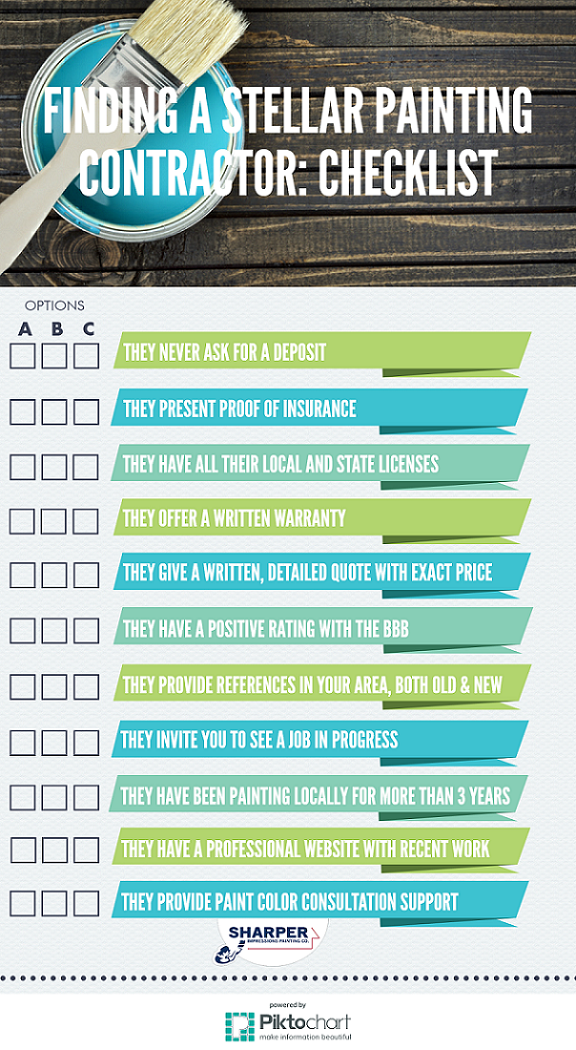Comprehending The Distinctions In Between Interior And Exterior Paint: Key Attributes And Uses
Comprehending The Distinctions In Between Interior And Exterior Paint: Key Attributes And Uses
Blog Article
Published By-Ellis Weaver
When you're picking in between interior and exterior paint, it's vital to comprehend their fundamental distinctions that influence both efficiency and looks. Inside paints are crafted for lower VOC levels and smoother surfaces, making them optimal for indoor rooms, while outside paints are designed to endure rough climate condition and UV exposure. Each type serves a distinctive purpose, but knowing when to utilize one over the other can considerably affect your job's outcome. So, what factors should you think about when making your choice?
Structure and Formula
When picking in between exterior and interior paint, understanding their composition and formula is important. Inside paints usually contain a reduced amount of unstable organic compounds (VOCs), making them much safer for interior air quality. You'll notice they commonly have a smoother finish, which improves their capacity to withstand spots and permits easier cleaning. They're made to withstand the roughness of interior environments, consisting of differing moisture levels and temperature level fluctuations.
On the other hand, exterior paints are developed to withstand harsher problems. They typically have higher degrees of pigments and additives to withstand fading from UV rays, in addition to to stop mold and mold and mildew development. Their make-up includes extra binders and resins, which supply better bond to surfaces subjected to the elements. This guarantees the paint can hold up against rainfall, snow, and changing temperature levels without peeling off or breaking.
Efficiency and Sturdiness
Examining performance and durability is vital when picking between interior and exterior paint. Inside residential painting twin cities is created for surfaces that experience less deterioration. It commonly withstands fading and scuffing, making it suitable for living areas and bed rooms. However, it might not stand up well in high-moisture areas like kitchens and bathrooms without correct solution.
On the other hand, exterior paint faces harsher problems. It's crafted to withstand UV rays, rain, and temperature level fluctuations. This sort of paint commonly includes ingredients that stop mold and mildew and mildew development, ensuring longevity in numerous climates. When you utilize external paint, you can expect it to last a number of years longer than indoor paint, provided it's used properly.
click over here now depends on the surface options. Interior paints typically have a variety of coatings for visual appeal, while exterior paints prioritize resilience over sheen. If you're looking for something that can handle the elements, exterior paint is your best option.
On the other hand, if you're concentrated on interior visual appeals with less concern for severe problems, indoor paint may be appropriate. Inevitably, your option ought to align with the specific needs of the environment.
Aesthetic Factors to consider
A fresh coat of paint can transform a room, but visual considerations play a crucial function in your choice in between interior and exterior alternatives. When you're selecting paint, consider the state of mind you wish to create. Inside paint enables you to check out a wider variety of shades and coatings, enabling you to share your personal style and boost your home's ambiance. Whether you go with soft pastels or strong tones, the ideal interior paint can make your areas feel comfy, vibrant, or calm.
On the other hand, exterior paint needs to line up with your home's style and the surrounding environment. Below, you're not just making a style declaration; you're additionally thinking about visual allure. Choosing colors that integrate with your area can increase your home's worth and visual charm. Remember that outside paint is likewise based on fading and climate adjustments, so choosing a classic color can conserve you from regular repainting.
Eventually, think about exactly how each option fits your vision. By straightening your paint option with your wanted aesthetic, you can produce areas that reflect your character while preserving performance.
Verdict
When it involves selecting paint, understanding the vital differences between exterior and interior alternatives is necessary. Inside paints focus on looks and low VOCs, making them excellent for boosting your indoor areas. On the other hand, outside paints are made for sturdiness and weather resistance, safeguarding your home from the aspects. By considering your particular demands and the atmosphere, you can with confidence select the ideal paint to accomplish the appearance and durability you want for your area.
